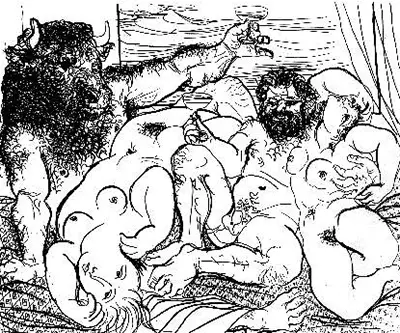In combination with classical mythology, the etching shows the influence of Henri Matisse on Picasso’s work, that is, solid images rendered with lines and hatching. However, these influences tell only part of the story. From a very young age, Picasso was talented in naturalistic painting. As his work progressed, the artist distinguished his output by concentrating on a particular style at different times, for example, the Blue and Rose periods. In addition to naturalism, Picasso is renowned as the founder of synthetic and analytic Cubism. Following years of painting in abstract styles, Picasso and other artists marked a post-war “return to order”, that is, eliding abstract shapes and forms in favour of more naturalistic schema. Other forces were behind Picasso’s return to naturalism.
With his Manifesto, French poet Andre Breton had set Surrealism in motion, a type of art that places everyday objects in unlikely juxtapositions in painting and poetry. Connected to dreams and the subconscious, Surrealism also has a psychic dimension. Under Breton’s influence, Albert Skira founded Minotaure, a Surrealist magazine, in Paris. The name was no accident, the minotaur being a mythical half-man, half-bull creature. Skira commissioned well-known artists to create drawings and etchings for its covers, including Picasso, and Bacchic Scene with Minotaur was one of these.
The etching has a vapid, dream-like quality, seemingly composed of rapid strokes that might dissolve in an instant. This technique also lends the image a sexually-charged power and excitement. Picasso’s Surrealism differs from that of Renee Magritte and Salvador Dali; instead of unlikely juxtapositions, he channeled his feelings about sex, desire and women into this and similar etchings, such as Tauromachiai (1934). In Bacchic Scene with Minotaur, the face of the nymph in the foreground is curiously elongated while in front of her, a hand waves from an unattached arm. In keeping with this grotesque imagery, the bodies on the right of the drawing are distorted and twisted into unnaturalistic poses. Together with the triumphantly-leering Minotaur and figure of Bacchus, this imagery heightens the sense that we are witnessing a nightmare, no doubt the impression that Picasso wanted to give.

